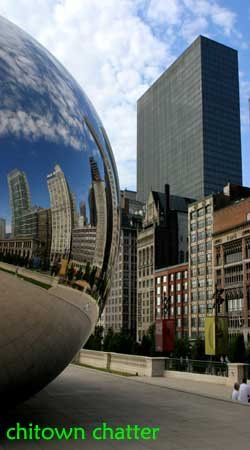You know it's going to be a good day when someone says "I need to prank the shit out of someone."
There is a long history of inspired creativity around these parts, and no better time than April 1st to execute such ideas. What if, hypothetically, a series of emails were sent to an unsuspecting AE (let's call him Z) from an economist, such as Steve Levitt? In particular, it is known that Z despises Levitt and widely disparages his research. So, how would he respond to an attractive job offer from a prominent economist?
These emails were sent from a Hotmail account, rather than a spoofed U of C account. After all, the goal here was to be a jerk, not ruin lives.
Email #1
Z,
Congratulations on your recent admittance to the University of Chicago Economics Department. As you may know, I currently direct the Becker Center on Chicago Price Theory housed at the Booth School of Business. I have familiarized myself with your work on DSGE models, and I believe it is in line with the contributions of the Becker Center. To that end, I thought I would make you aware of an opportunity here at the Becker Center. Each year we take on several Graduate Assistants, these are people who we believe show promise. More than half of our Graduate Assistants have gone on to become Becker Center Research Fellows. This position would allow you to work closely with the Becker Center faculty such as myself to develop your ideas as you progress through your degree. I realize you have not yet finalized your graduate school decision yet, but I hope that this offer may help you to understand all of your options. Please e-mail me if you have any questions or to follow up about the position.
Steven Levitt
Let's review: this email included a rather unusual offer, and was sent on April 1st from a Hotmail account. I thought it would get spotted as fraudulent in about 30 seconds. Much to my shock, Z replied sincerely, saying that he was interested in meeting Levitt and looked forward to seeing him at the Chicago open house tomorrow. What now? Clearly, this is a cue to up the ante and become progressively more outrageous.
Email #2
Z,
Outstanding. While you're here I'd like to make sure I introduce you to Gary. Unfortunately he's been a bit moody recently but the color purple seems to have a soothing effect on him (the doctors have called it "neurochromopathy") so if you can make sure to include it in your ensemble it would be for the best. I look forward to our meeting and discussing some of my research with you. Please e-mail me if you have any further questions.
Steve
Z,
Outstanding. While you're here I'd like to make sure I introduce you to Gary. Unfortunately he's been a bit moody recently but the color purple seems to have a soothing effect on him (the doctors have called it "neurochromopathy") so if you can make sure to include it in your ensemble it would be for the best. I look forward to our meeting and discussing some of my research with you. Please e-mail me if you have any further questions.
Steve
That's bizarre enough that warning flags should triggered, right? Or, it could result in Z borrowing a purple sweater...
Time to bring out the over-the-top guns.
Email #3
Z,
Do you mind swinging by Treasure Island on your way over and bringing some Greek style plain yogurt for Gary and I? I really love the luxurious silky texture of the yogurt in my mouth. When I eat it while listening to a bit of Chopin it, it really helps me focus on the current problem. Perhaps you can try it with us.
Steve
At this point, it was time to call it quits before serious damage was done. Z took the news well, and for the record, claims to have known it was a joke. Also, he said that he did not notice the Hotmail address, since Gmail automatically hides headers unless you click "details."
Lessons learned:
1) The most credible pranks are ones that give the prankee something they desire.
2) Never trust email sent from Hotmail.



















